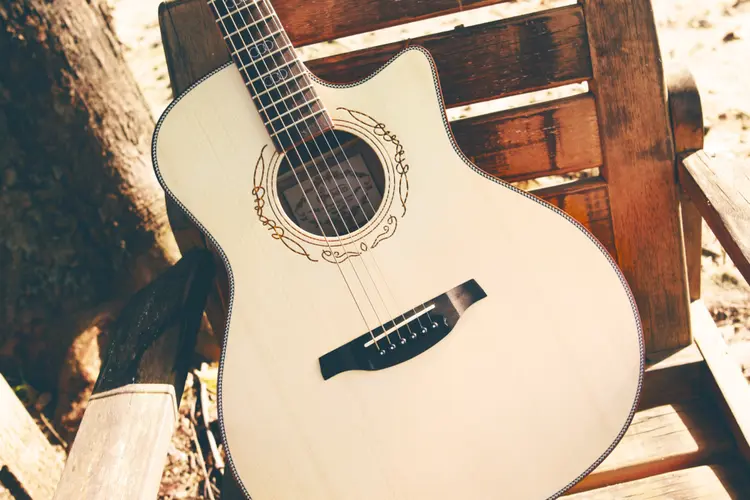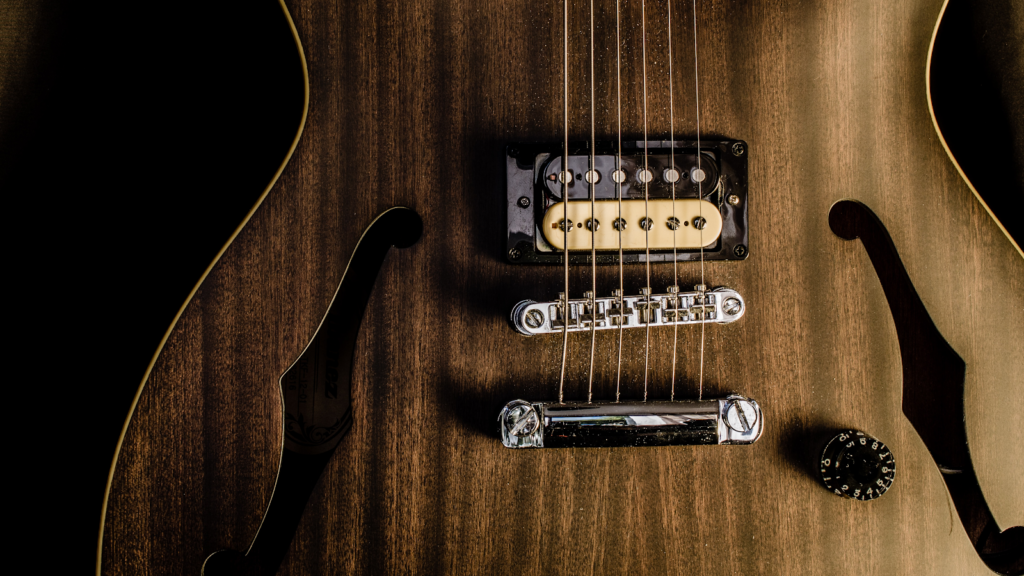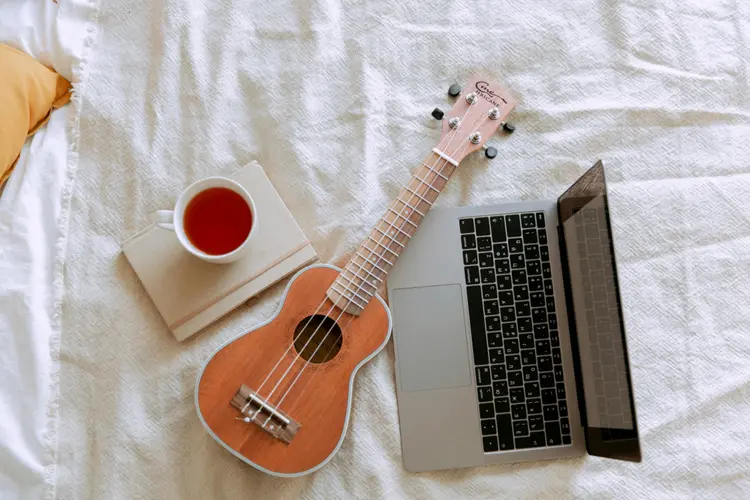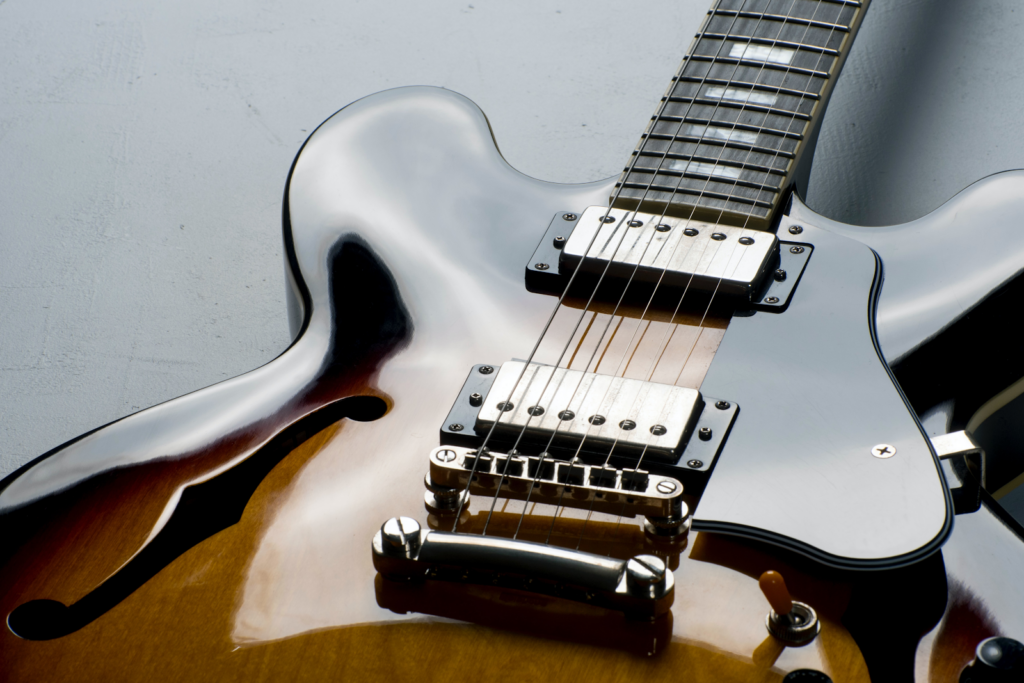Embarking on the quest to find the perfect guitar can be as exciting as it is daunting. With an array of different types of guitars available, choosing the right one can feel overwhelming. Whether you’re a beginner taking your first step into the world of music or a seasoned player seeking a new addition to your collection, understanding the nuances of acoustic guitars, electric guitars, bass guitars, and more is essential.
Uncovering Different Types of Guitar: Find the Perfect Instrument for Your Musical Journey
This comprehensive guide is designed to navigate the vibrant landscape of guitars. From the resonant depth of steel string guitars to the electrifying versatility of electric guitars, we’ll delve into what makes each type special.
Let’s find the guitar that doesn’t just play music but tells your story.
Acoustic Guitar: The Heart of Musical Tradition

Acoustic guitars have long been a staple in the music world, revered for their rich, natural sound and versatility.
Typical, these guitar types use steel strings to deliver a bright, resonant tone ideal for a variety of music genres. Unlike their electric counterparts, acoustic guitars don’t require amplification, making them perfect for unplugged sessions and intimate performances.
The body of an acoustic guitar plays a pivotal role in its sound. The soundboard is typically made of spruce or cedar, which amplifies the vibrations from the strings, while the body’s size and shape influence the guitar’s overall tone and volume. Dreadnought, Parlor, and Jumbo are some popular body styles found on acoustic models, each offering distinct tonal characteristics.
Acoustic guitars are incredibly versatile, which makes them suitable for genres ranging from folk and country to blues and rock. Their ease of use and portability also make them a favorite among beginners or kids learning to play the guitar. The combination of steel strings and a hollow body creates a unique sound that is both warm and bright, capable of both rhythmic strumming and intricate fingerpicking.
Electro-Acoustic Guitar: The Best of Both Worlds

Electro-acoustic guitars blend the classic acoustic experience with modern technology. These guitars come equipped with electronic pickups and preamps, allowing them to be connected to amplifiers or PA systems. This feature makes them ideal for live performances where higher volume levels are needed without sacrificing the acoustic tone.
The design of electro-acoustic guitars often mirrors traditional acoustic guitars but with added electronic components. These components typically include a pickup, which captures the vibrations of the strings, and a preamp, which boosts the signal before it reaches the amplifier. Many models also come with built-in guitar tuners and EQ controls for tone shaping.
Musicians who prefer the feel and sound of an acoustic guitar but need the amplification of an electric guitar will find electro-acoustic guitars a perfect match. They are especially popular in genres like pop, rock, and folk, where the acoustic sound is desired, but greater volume and presence are needed.
Electric Guitar: The Icon of Rock and Roll

Electric guitars have revolutionized the music industry with their ability to produce a wide range of sounds and effects. The core of their design is the solid body, which minimizes feedback and allows for high levels of amplification. Solid-body electric guitars are known for their sharp, clear tones and sustain.
Unlike acoustic guitars, electric guitars use pickups to convert the vibration of the steel strings into an electrical signal, which is then amplified. The type of pickups (single-coil or humbucker) greatly influences the guitar’s sound, with single-coils producing a brighter, crisper sound and humbuckers offering a warmer, fuller tone.
Electric guitars are incredibly versatile and are used in a vast array of musical genres, from rock and metal to jazz and blues. The ability to manipulate their sound through effects, pedals, and amplifiers allows for a high degree of creative expression. Additionally, electric guitar strings are lighter, which makes them easier to play, especially for beginners or those transitioning from classical or acoustic guitars. Just like acoustic, there are many different types of electric guitar.
Classical Guitar: The Touch of Elegance and Tradition

Classical guitars (or nylon string guitars) stand out with their distinct use of nylon strings, which produce a softer, mellower sound compared to the bright twang of steel. This makes them particularly suited for classical and flamenco music, although they’re versatile enough for various genres. The wider neck and fingerboard of a classical guitar offer more space between the strings, facilitating intricate fingerstyle techniques and classical music’s complex chord shapes.
The construction of a classical guitar is typically characterized by a smaller body and a focus on natural, resonant woods like cedar or spruce for the top and rosewood or mahogany for the back and sides. These materials contribute to the guitar’s warm, rich tone.
Classical guitar players often value the instrument’s intimate sound and the direct connection between the nylon strings and their fingertips. This type of guitar is not just for classical music; it’s also widely used in folk, Latin, and even modern pop music, offering a unique tonal palette.
The softer strings make this guitar type easier for beginners over steel-string acoustic guitars, and there is a range of cheaper classical guitars that offer great sound without an extortionate price tag.
Bass Guitar: The Backbone of Rhythm and Groove

Bass guitars, essential in most music bands, lay the foundation for rhythm and groove. They typically have four strings, though five and six-string versions are also common. These strings are thicker than those of a standard guitar, producing lower, deeper sounds crucial for holding down the rhythm section of a band.
Bass guitars come in both acoustic and electric forms. The electric bass guitar has been a staple in genres like rock, jazz, funk, and pop. Its design often mirrors that of a solid-body electric guitar but with a longer neck to accommodate lower-pitched strings. The electric bass is usually played with a guitarist’s fingers or a pick. You can amplify the sound to suit various performance settings.
The role of the bass guitar in a band is often understated but vital. It bridges the gap between the rhythmic and harmonic elements of the music, providing a solid foundation that other instruments build upon.
Resonator Guitar: A Distinctive Sound from a Unique Design

[Source: Paul Beard Goldtone Dobro.]
Resonator guitars are a fascinating type of guitar known for their loud, metallic sound, a stark contrast to the woody tone of traditional acoustic guitars. These guitars use a metal resonator cone instead of a wooden soundboard to amplify sound. This unique design was initially intended to produce a louder sound before the invention of electronic amplification.
There are two main types of resonator guitars: the square-necked type (played like lap steel guitars) and the round-necked version, played like a standard guitar. They can have one or more metal cones, each producing a slightly different tone. The most common resonator guitars are the single-cone “biscuit” style and the three-cone “tricone” style.
Resonator guitars are popular in blues, country, and bluegrass music. Their distinctive twang and volume make them ideal for slide guitar playing, a technique where a metal or glass slide is used to create a smooth, gliding sound.
Ukuleles: The Charming Island Strings

Ukuleles bring a distinctively cheerful and light sound to the world of stringed instruments. Originating from Hawaii, they have gained immense popularity globally for their ease of play and portability. Ukuleles typically have four nylon strings, which produce a soft, mellow tone that is instantly recognizable.
There are four main sizes of ukuleles: soprano, concert, tenor, and baritone. Each size offers a slightly different tone and feel, with the soprano being the smallest and most traditional size, known for its bright, jangly sound. The larger tenor and baritone ukuleles provide a deeper tone and more volume.
Ukuleles are well-suited for strumming and fingerpicking, making them versatile for various music styles, including folk, pop, and Hawaiian music. Their friendly, inviting sound has made them a favorite for beginners and seasoned players alike. And because they are so accessible, there’s a whole host of ukulele songs and recommendations out there to help players get started.
Mandolins: The Vibrant Voice in Folk and Classical Music

Mandolins, with their distinctive pear-shaped body and eight strings, are a staple in folk, bluegrass, and classical music. They are typically strung in four courses of two strings each, which are tuned in unison. The mandolin’s bright, jangling sound is a result of its double-string courses and unique body construction.
The most common styles of mandolins are the Neapolitan or round-backed mandolin and the flat-backed mandolin. Each style offers a different tone and playing experience. The Neapolitan is more traditional and has a deeper, rounder sound, while the flat-backed version is more common in American folk and bluegrass music.
Mandolins are highly versatile and can be used for rhythm and lead roles in a band setting. Their crisp, percussive sound makes them excellent for fast, intricate picking patterns, which is why they’re so popular in genres that require a lively, rhythmic sound.
Banjos: The Rhythmic Heart of Bluegrass and Folk

Banjos are renowned for their bright, twangy sound, making them a favorite in bluegrass, country, and folk music. The banjo typically has five strings and features a drum-like circular body with a tightly stretched membrane. The fifth string, known as the drone string, is shorter and adds to the banjo’s distinctive sound.
There are several types of banjos, including the 5-string banjo, 4-string tenor banjo, and the 6-string banjo, each offering different playing styles and sounds. The 5-string banjo is most commonly used in bluegrass and traditional folk music, while the 4-string and 6-string variants are often found in jazz, Irish, and classical music.
Banjos are versatile instruments that can be played using various techniques, including fingerpicking and strumming. Their lively sound and rhythmic capabilities make them integral to the energetic feel of the music genres they are most associated with.

Other Types of Guitar to Consider
Hawaiian Steel Guitar: A lap steel guitar producing a distinctive, smooth sound, integral to Hawaiian music with a resonant slide technique.
Twelve String Guitars: Double-stringed guitar offering rich, full tones, enhancing depth in chords and melodies, ideal for rhythmic and lush soundscapes.
Extended Range Guitars: Guitars with additional strings beyond the usual six, offering extended lower or higher notes for a wider musical range.
Pedal Steel Guitar: A complex, expressive instrument with pedals and knee levers for pitch modulation, prominent in country and Western music.
Choosing the Right Guitar: Finding Your Musical Match
Selecting the perfect guitar for you can be a thrilling yet daunting task, especially for beginners. Whether you’re drawn to the mellow tones of acoustic guitars, the thrill of electric guitars, or the deep grooves of bass, finding the right guitar involves considering several factors. The good thing is we’ve got you covered.
Understand Your Musical Preferences and Goals
Consider the type of music you want to play. If you’re inspired by classical or flamenco music, a classical guitar with nylon strings might be your best choice. For folk, country, or singer-songwriter styles, a steel-string acoustic guitar would be ideal. Those looking to rock out or explore a wide range of sounds and effects might lean towards a solid-body electric guitar.

Consider the Size and Playability
When selecting the right guitar for you, the instrument’s size and playability are crucial factors that will significantly affect your comfort and ability to play efficiently.
Size Matters
Guitars come in various sizes and body shapes, each offering a different playing experience. For instance, a dreadnought acoustic is larger and produces a robust sound but might be cumbersome for smaller players. Similarly, jumbo guitars offer great volume and bass response but can be bulky. Concert and parlor guitars are smaller and more comfortable for smaller players or children.
Electric guitars typically have smaller bodies than acoustics. However, the body shape and weight distribution can vary significantly between models like Stratocasters, Telecasters, Les Pauls, or SGs, affecting how the guitar feels when standing or sitting.
Playability: Neck, Strings, and Action
Neck Profile and Width – The neck’s shape and width greatly influence playability. A thinner neck might be easier for beginners or players with smaller hands. Classical guitars typically have wider necks, which can be challenging for some but beneficial for fingerstyle techniques.
String Gauge and Tension – Lighter gauge strings are easier to press down and bend, making them a good choice for beginners or players with less finger strength. However, heavier strings provide a richer tone and more sustain.
Action – This refers to the distance between the strings and the fretboard. Lower action makes a guitar easier to play as less pressure is needed to fret the notes, but it can lead to buzzing if it’s too low. High action can be tiring and difficult for fast play but provides clearer sound and more volume.
Scale Length
This is the length of the string that vibrates, measured from the nut to the bridge. A longer scale length (like on many Fender electric guitars) means more tension, resulting in a brighter tone and more sustain. A shorter scale length (found in many Gibson models) offers less tension, making it easier to bend strings.
Acoustic vs. Electric: What’s Your Style?
The choice between an acoustic guitar and an electric guitar is a significant decision for any musician, as it can greatly influence your playing style, the genres you gravitate towards, and even your learning path. Here’s a deeper dive into the characteristics of each to help you make a more informed decision.
Acoustic Guitars: Natural Sound and Portability
Tonal Quality – Acoustic guitars are celebrated for their rich, natural sound. The resonance of the guitar’s body amplifies the sound of the strings (or nylon strings in classical guitars), producing a warm and vibrant tone.
Versatility – Acoustics are versatile for a range of music genres, from folk and country to pop and rock. They are particularly favored for singer-songwriter styles and fingerstyle playing.
Convenience – They don’t require external amplification, which makes them more portable and ideal for unplugged sessions, outdoor playing, or travel.
Playability: Acoustic guitars can be more challenging for beginners due to the higher tension of the steel strings and the wider neck, especially in classical guitars. However, they are excellent for building finger strength and dexterity.
Electric Guitars: Amplified Sound and Ease of Play
Sound Diversity – Electric guitars offer a wide range of sounds that can be modified and amplified. Through various pickups and effects, players can explore multiple sonic landscapes, from clean and mellow to distorted and aggressive.
Genre Suitability – They are a staple in rock, metal, blues, and jazz. Their ability to handle high volume and sustain makes them ideal for band settings and genres that require amplified sound.
Ease of Play – Electric guitars generally have lighter strings and a slimmer neck, making them easier to play, particularly for beginners. The lower string tension allows for easier bending of notes and faster playability.
Equipment Requirements – Electrics require an amplifier and, often, effect pedals to fully realize their potential. This can mean additional investment and less portability compared to acoustic guitars.
Budget Considerations
Set a realistic budget for your guitar. Remember, you often get what you pay for in terms of quality. However, there are many affordable options that offer great value. Don’t forget to factor in the cost of accessories like a case, tuner, extra strings, or an amplifier (for electric guitars).

Maintenance and Upkeep
Proper maintenance and care are crucial for preserving the quality and longevity of your guitar, regardless of whether it’s an acoustic guitar, electric guitar, bass guitar, or any other type. Here’s a more detailed look at what this involves.
Handling and Storage
Temperature and Humidity Control – Guitars, especially acoustic and classical types with wooden bodies, are sensitive to extreme temperatures and humidity. Avoid leaving your guitar in places with drastic temperature changes or high humidity. Use a guitar humidifier in dry climates to prevent the wood from cracking.
Safe Storage – When not in use, store your guitar in a case or hang it on a wall mount. This protects it from dust, accidental damage, and environmental factors.
Regular Cleaning and Care
Cleaning the Body and Neck – Regularly wipe down your guitar with a soft, dry cloth to remove fingerprints and dust. For more thorough cleaning, use a guitar polish or cleaner, but avoid household cleaning products.
Fretboard Care – The fretboard requires occasional cleaning and conditioning, especially if it’s made of unfinished wood like rosewood or ebony. Use a fretboard conditioner to keep the wood from drying out and cracking.
String Maintenance – Strings are prone to wear and tear. They should be changed regularly, depending on how often you play. Wiping down the strings after playing can prolong their life by removing oils and sweat from your fingers.
Tuning and Adjustments
Regular Tuning – Keeping your guitar in tune not only ensures better sound but also maintains the tension on the neck at a constant level. Use a reliable tuner for accurate tuning.
Truss Rod Adjustments – The truss rod, a metal rod inside the neck, may need adjustments to maintain the correct neck curvature. This task can be complex for beginners, so it might be best to have a professional do it.
Bridge and Nut Maintenance – The bridge and nut can wear down over time. Check them regularly for signs of wear and replace them if necessary to ensure proper string height and intonation.
Professional Set-Up and Repairs
Annual Check-Up – Consider getting your guitar professionally set up at least once a year. A professional luthier or guitar technician can adjust the action, intonation, and check for any issues that might affect playability or sound.
Handling Repairs – For more significant issues like a warped neck, broken headstock, or electronic problems in electric guitars, seek professional repairs. Attempting DIY repairs without proper knowledge can lead to further damage.
Choosing the right guitar is a personal journey and an investment in your musical future. Whether it’s the warm strumming of an acoustic guitar, the soulful melodies of a classical guitar, the deep rhythm of a bass guitar, or the versatility of an electric guitar, each type brings its unique flavor to your musical expression. Take your time, do your research, and most importantly, choose a guitar that resonates with you, both literally and figuratively.
Conclusion: Striking the Right Chord with Your Guitar Choice
Embarking on the journey of choosing a guitar from the diverse world of different types of guitars is an exciting and personal endeavor. Whether your heart is set on the natural resonance of acoustic guitars, the amplified versatility of electric guitars, the deep grooves of bass guitars, or the unique sounds of classical guitars, resonator guitars, ukuleles, mandolins, and banjos, each instrument has its own charm and voice.
Remember, the right guitar for you is the one that aligns with your musical style, feels comfortable in your hands, suits your budget, and inspires you to play and grow as a musician. Consider the size, playability, and maintenance needs, and think about how your choice fits with your goals and the type of music you want to create. Take the time to explore, try different guitars, and listen to their voices.
The perfect guitar for you is out there, waiting to be played, to resonate with your music, and to be part of the stories you’ll tell through your songs.


